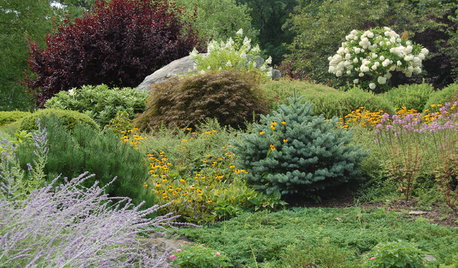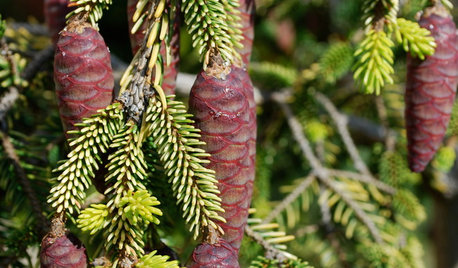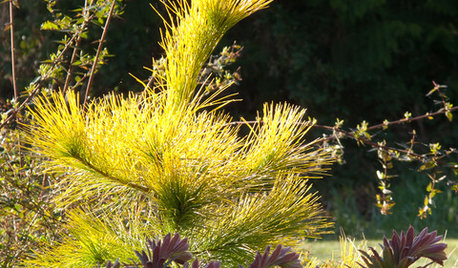Various Conifers - when to fertilize?
Johniferous (Zone 6B, Northern NJ)
9 years ago
Related Stories

GARDENING GUIDESGet on a Composting Kick (Hello, Free Fertilizer!)
Quit shelling out for pricey substitutes that aren’t even as good. Here’s how to give your soil the best while lightening your trash load
Full Story
GARDENING GUIDESDesigning With Conifers: Finding the Right Garden Bedmates
In gardening, building on commonalities creates an enduring relationship
Full Story
GARDENING GUIDESGreat Design Plant: Skylands Oriental Spruce, a Favorite Conifer
Brighten up a drab corner of your garden with Picea orientalis ‘Skylands’, a smaller spruce that a bird family might just call home
Full Story
GARDENING GUIDESWeed War: When and How to Use Chemical Herbicides
Before you spray, arm yourself with knowledge about which weed killers — natural or synthetic — are right for your yard
Full Story
GARDENING GUIDESHave Acidic Soil in Your Yard? Learn to Love Gardening Anyway
Look to acid-loving plants, like conifers and rhododendrons, to help your low-pH garden thrive
Full Story
GARDENING GUIDESGreat Design Plant: Louie Eastern White Pine
This stunning golden conifer will bring a smile to your face and add a ray of sunshine to your winter garden
Full Story
GARDENING AND LANDSCAPINGBackyard Living: The Scoop on Chicken Coops
Perk up your morning with fresh eggs and chickadee clucks when you build a chicken coop in your own yard
Full Story
HOUSEPLANTS8 Essentials for Healthy Indoor Plants
Houseplants add so much to our homes — and can thrive when grown in the right conditions. Keep these tips in mind
Full Story
SAVING WATER6 Reasons Why You Should Save Your Rainwater Now
Collect and store during the rainy season so you’ll have water ready for irrigation when you need it
Full Story
GREEN BUILDINGEcofriendly Cool: Insulate With Wool, Cork, Old Denim and More
Learn about the pros and cons of healthier alternatives to fiberglass and foam, and when to consider an insulation switch
Full StoryMore Discussions










ken_adrian Adrian MI cold Z5
davidrt28 (zone 7)
Related Professionals
Garden City Landscape Architects & Landscape Designers · Alpharetta Landscape Contractors · Barrington Landscape Contractors · Bristol Landscape Contractors · Byram Landscape Contractors · Chattanooga Landscape Contractors · Fountain Valley Landscape Contractors · Homewood Landscape Contractors · Lancaster Landscape Contractors · Maywood Landscape Contractors · San Bruno Landscape Contractors · Selden Landscape Contractors · South Lyon Landscape Contractors · Tinton Falls Landscape Contractors · Palos Hills Landscape ContractorsToronado3800 Zone 6 St Louis
basic
Embothrium
davidrt28 (zone 7)
Embothrium
davidrt28 (zone 7)